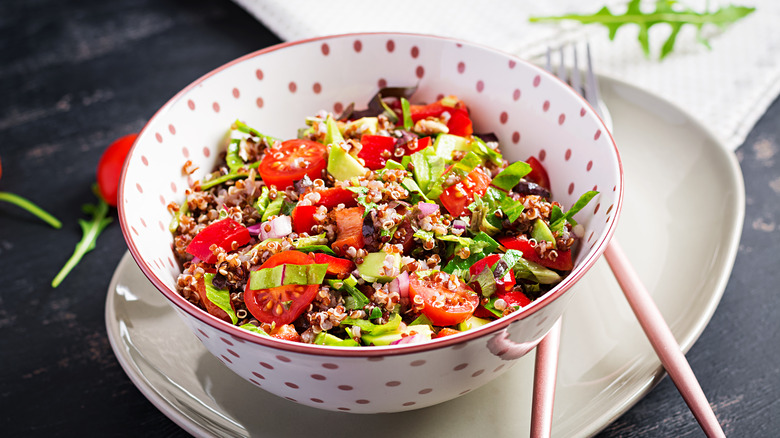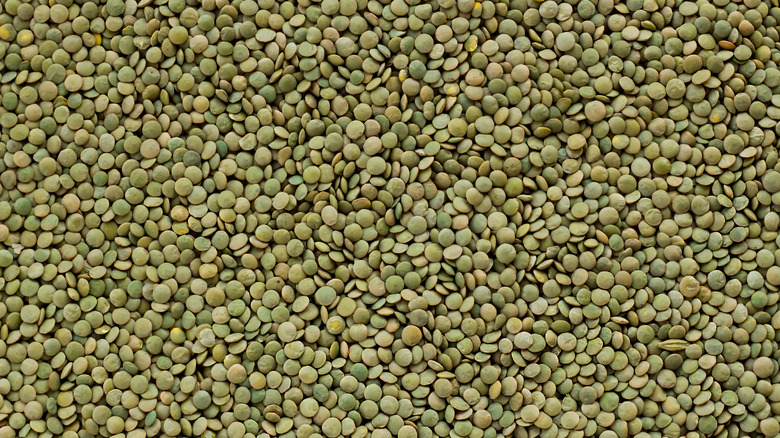The Type Of Lentil You Should Try In Tabbouleh
Arab America says that tabbouleh, or tabouli, is one of the most popular salads in the Middle East. There, it's often served as "mezze," a dining experience similar to Spanish tapas. At its core, tabbouleh is made from fresh parsley, bulgur, and tomatoes and is typically completed with a friendly drizzle of olive oil and lemon juice to give it a bright and refreshing finish. It can be enjoyed on its own for a light lunch, as an appetizer during family dinners, and even as a side to dishes like fire-roasted shakshuka.
Believed to have originated in the hillside regions of Lebanon, where the dish's fresh herbs thrived, the salad is the country's national food and even has an annual holiday celebrated in its honor on the first Saturday of each July. However, today tabbouleh, and its variations are known and cherished in cuisines far and wide, where it is commonly adapted to fit the preferences of the many different diets around the world. As a plant-based dish, it's not uncommon to find tabbouleh with added vegetables. More boldly, the bulgur, an ancient Middle Eastern grain (per Britannica), is often substituted with other ingredients to make the salad gluten-free.
As the main ingredient, substituting the bulgur in your tabbouleh is a risky move — one that could sabotage the nutty, chewy, and earthy flavors that The Mediterranean Dish says it brings to the table. Fortunately, there is one lentil that could suffice.
Green lentils
Bulgur isn't just delicious, it's nutritious, too. As the main ingredient of tabbouleh, bulgur serves as a staple source of satiating nutrients — delivering 6 grams of protein and 8 grams of fiber per serving, according to Healthline. So, if you plan on substituting it for something else, not only should that ingredient uphold the chewy texture and earthy flavors that the ancient grain adds, but it also needs to provide comparable nutrients. One common gluten-free substitution for bulgur in tabbouleh is quinoa, which — if you consider toasting it — will provide a similar nutty flavor, just without the chew and significantly less fiber and protein (via Healthline).
For this reason, you'll also find tabboulehs made with lentils. Even though MasterClass says that all lentils have similar cooking times, and Healthline says that, no matter what color, they all provide around 18 grams of protein and 16 grams of fiber, there's one color of lentil that's best for tabbouleh: the green ones. Green lentils are perfect for salads like tabbouleh because, unlike the other colors, they'll actually hold their shape, providing that nice chew you'd get from the traditional bulgur. Babagonosh says that this is because they're typically sold whole instead of split like other lentils. While this might also mean that they'll take a bit longer to cook, you'll get a nice, chewy tabbouleh with plenty of protein and fiber.

